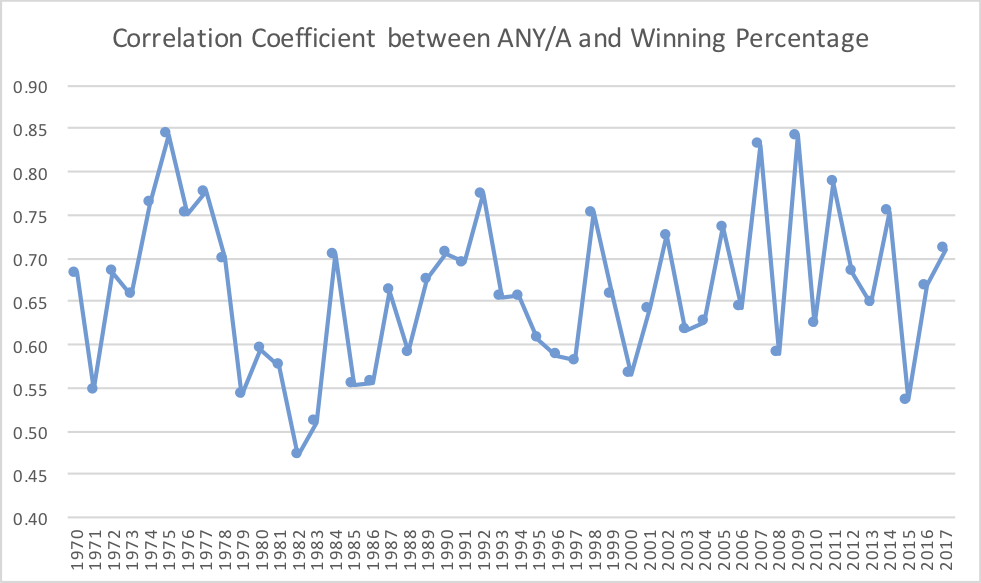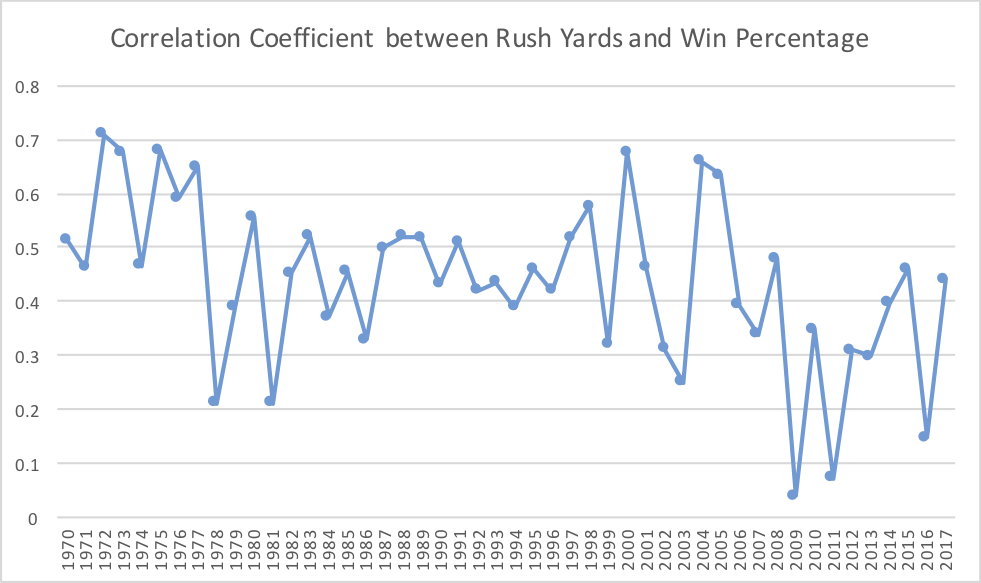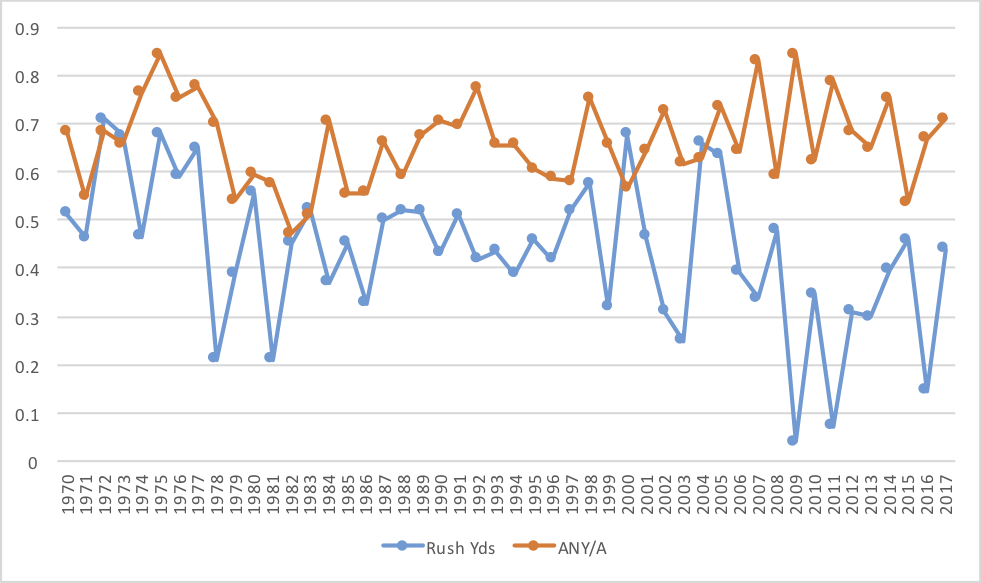Recency bias and ever-escalating statistics has led many modern fans to claim that the passing game today is more important than ever. That’s not really true.
But I decided to run another experiment (and check the 2017 data) on the importance of the passing game. I measured the correlation coefficient between winning percentage and Adjusted Net Yards per Attempt in 2017; it was 0.71, which indicates a very strong positive relationship. This is what you would expect: as ANY/A increases, so does winning percentage. Last year, the Saints, Patriots, Chargers, Rams, and Chiefs were the top 5 teams in ANY/A, and they combined for 54 wins and a 0.675 winning percentage. The bottom 5 teams in ANY/A? Cleveland, Denver, Green Bay, Baltimore, and Miami, who combined for just 26 wins and a 0.325 winning percentage.
So ANY/A was correlated with winning percentage in 2017, but that’s not too unusual. From 1974 to 1977, the correlation between the two measures was 0.75 or higher each year. There’s some random variation each year, but on average, the correlation coefficient has been about 0.66. Take a look:

Now, what if we do the same thing but use rushing yards instead of ANY/A? Well, the correlation is still positive, of course — in general, winning teams tend to rush for more yards. But the correlation isn’t nearly as strong, particularly in recent times. The correlation between the two variables was 0.44 last year, 0.15 in 2016, and 0.46 in 2015. In 2009, the correlation coefficient was just 0.04 between rushing yards and winning percentage, while it was a whopping 0.84 between passing efficiency and winning.
But the interesting thing is that rushing used to be more highly correlated with winning, even if passing efficient isn’t more correlated. Take a look at the correlation coefficient between rushing yards and winning percentage in each year since 1970:

And what if we plot both on the same graph?

So what’s the explanation? Well, there are quite a few conclusions one could draw. One would be that parity has made it harder for the best teams to be good at both passing and rushing, and so the high correlation a generation ago was because the best teams at rushing were also efficient passing teams. Another would be that in the modern game, rushing yards are just not that important: teams can move the chains and drain the clock with the short passing game.
What do you think?
